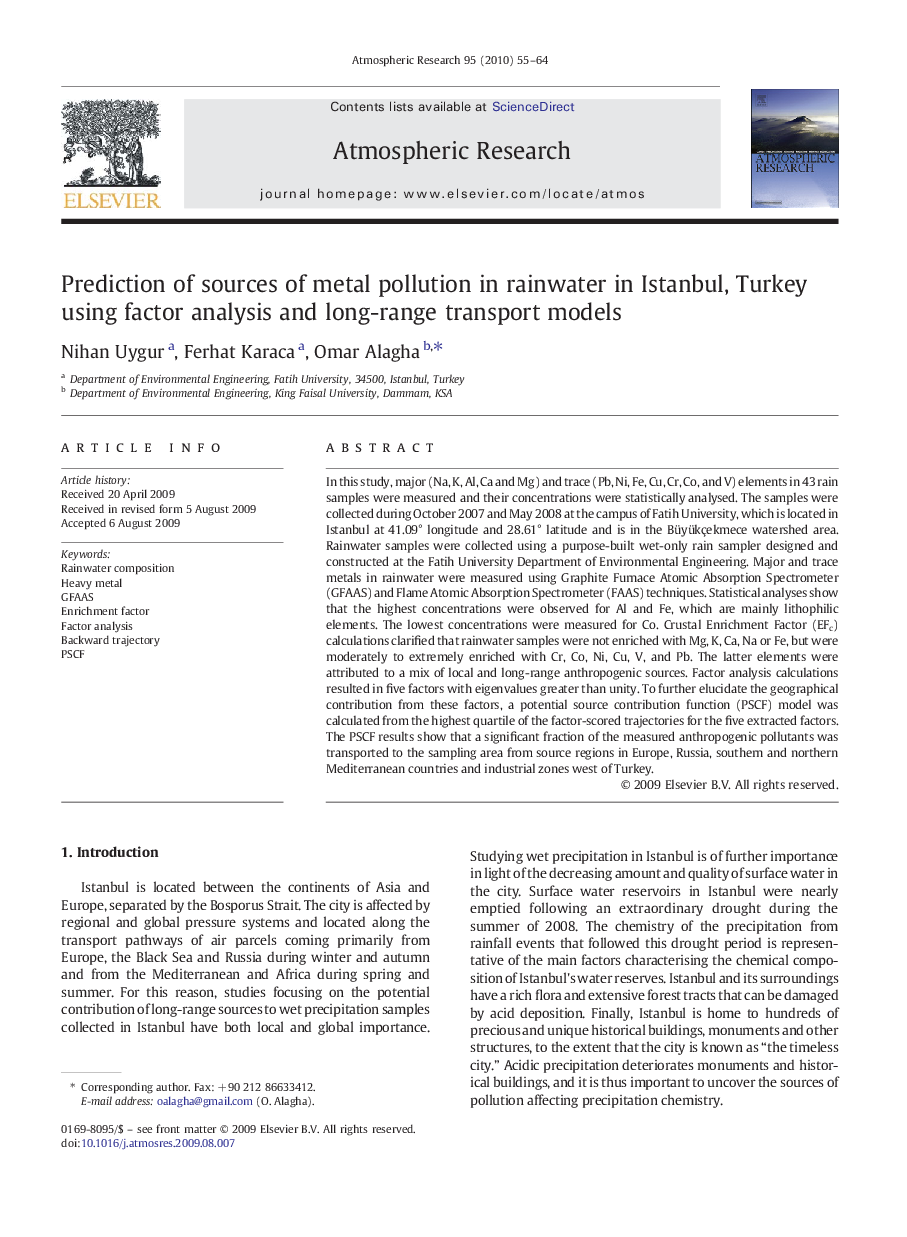| Article ID | Journal | Published Year | Pages | File Type |
|---|---|---|---|---|
| 4450898 | Atmospheric Research | 2010 | 10 Pages |
In this study, major (Na, K, Al, Ca and Mg) and trace (Pb, Ni, Fe, Cu, Cr, Co, and V) elements in 43 rain samples were measured and their concentrations were statistically analysed. The samples were collected during October 2007 and May 2008 at the campus of Fatih University, which is located in Istanbul at 41.09° longitude and 28.61° latitude and is in the Büyükçekmece watershed area. Rainwater samples were collected using a purpose-built wet-only rain sampler designed and constructed at the Fatih University Department of Environmental Engineering. Major and trace metals in rainwater were measured using Graphite Furnace Atomic Absorption Spectrometer (GFAAS) and Flame Atomic Absorption Spectrometer (FAAS) techniques. Statistical analyses show that the highest concentrations were observed for Al and Fe, which are mainly lithophilic elements. The lowest concentrations were measured for Co. Crustal Enrichment Factor (EFc) calculations clarified that rainwater samples were not enriched with Mg, K, Ca, Na or Fe, but were moderately to extremely enriched with Cr, Co, Ni, Cu, V, and Pb. The latter elements were attributed to a mix of local and long-range anthropogenic sources. Factor analysis calculations resulted in five factors with eigenvalues greater than unity. To further elucidate the geographical contribution from these factors, a potential source contribution function (PSCF) model was calculated from the highest quartile of the factor-scored trajectories for the five extracted factors. The PSCF results show that a significant fraction of the measured anthropogenic pollutants was transported to the sampling area from source regions in Europe, Russia, southern and northern Mediterranean countries and industrial zones west of Turkey.
